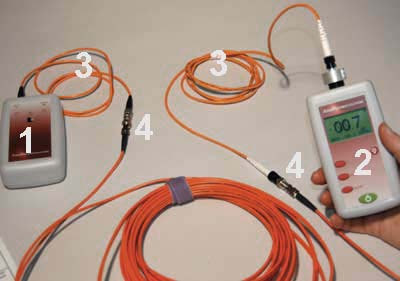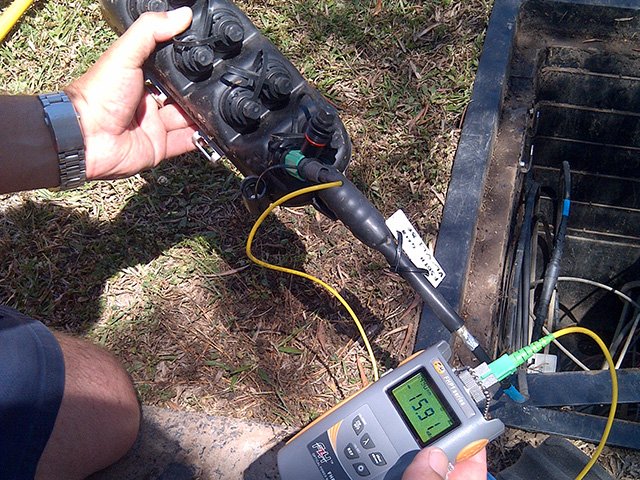The most advanced optical fibre diameter analyser supports fibre optic research and development.
The most advanced optical fibre diameter analyser supports fibre optic research and development.
Blog Article
The Role of Optical Fibre Screening in Ensuring Quality and Performance in Connection Solutions
In today's swiftly advancing electronic landscape, the value of optical fiber testing can not be overstated, as it offers as a keystone for making certain the top quality and effectiveness of connection options. As modern technology continues to advancement, the future of optical fiber screening positions intriguing difficulties and chances that warrant closer examination.
Significance of Optical Fiber Testing
The importance of optical fibre testing can not be overemphasized in guaranteeing the stability and efficiency of interaction networks. As the foundation of contemporary telecommunications, optical fibers assist in high-speed information transmission, making their integrity crucial to functional success. Examining serves as an aggressive step to identify prospective problems such as signal loss, attenuation, and physical damages, which can endanger network efficiency.
Regular testing enables for the confirmation of setup top quality and the detection of issues that could affect data stability - optical fibre testing equipment. By utilizing extensive screening protocols, network drivers can alleviate the threats associated with network failures, including downtime and monetary losses. Optical fibre testing makes sure conformity with sector standards and regulations, boosting the overall quality of service provided to end-users.
Eventually, the organized evaluation of optical fibres contributes to the durability and efficiency of communication systems. It allows stakeholders to make enlightened choices relating to maintenance, upgrades, and troubleshooting. In a landscape where information is increasingly vital, focusing on optical fiber screening is important to sustaining robust and reliable connection solutions, thereby supporting the needs of modern digital settings.
Types of Optical Fiber Examinations
Different screening techniques are used to make sure the functionality and reliability of optical fibres within communication networks. These examinations can be generally categorized into 2 major types: installation tests and maintenance examinations.
Installation examinations are performed promptly after the installation of optical fibre wires to verify their performance and stability - robotic vision. The most usual installation tests include Optical Time-Domain Reflectometry (OTDR) examinations, which assess the top quality of the fiber by determining faults or breaks, and end-to-end loss tests, which gauge the total optical loss from one end of the fiber to the various other
Upkeep tests, on the various other hand, are carried out periodically to make certain recurring performance and discover potential problems in time. These include aesthetic assessment, which checks for physical problems or improper installations, and connection tests, which validate that the signal can travel through the fiber without disruption.
Furthermore, advanced tests such as Polarization Setting Dispersion (PMD) and Chromatic Diffusion (CD) examinations can be performed to examine the fibre's performance under various problems. By utilizing these varied testing techniques, professionals can maintain high requirements of quality and reliability in optical fiber networks.
Advantages of Regular Evaluating
Regular screening of optical fibers plays a crucial role in preserving the total performance and integrity of interaction networks. By carrying out regular analyses, companies can ensure that their fiber optic installments meet industry standards and operate efficiently. This aggressive strategy assists to determine potential weaknesses and degradation gradually, enabling timely interventions before problems intensify.

Cost-effectiveness is another benefit. By attending to minor issues early, organizations can avoid the high prices related to significant repairs or system failings. Routine testing additionally fosters compliance with governing needs, ensuring that the network sticks to required safety and performance requirements.
Typical Concerns Identified
Determining typical problems in optical fibre networks is necessary for maintaining ideal performance and dependability. Numerous factors can add to disturbances, including physical damage, poor installation practices, and environmental influences.
Physical damage, such as bends, index breaks, or abrasions, can significantly degrade signal top quality. Incorrect installment strategies, consisting of excessive tension or inadequate safeguarding of cables, might cause boosted depletion and loss of connection. Furthermore, ecological variables such as temperature variations, wetness ingress, and rodent interference can jeopardize the integrity of the fiber.
Connector problems likewise frequently occur, with improper placement or contamination bring about boosted insertion loss. Furthermore, splicing errors can introduce substantial signal degradation otherwise carried out with accuracy.

Dealing with these usual concerns via normal optical fibre screening not only improves network integrity but additionally maximizes total efficiency, ensuring that connection solutions stay robust and efficient.
Future Trends in Examining
As the need for high-speed connection remains to rise, the future of optical fibre testing will progressively concentrate on automation and progressed analytics. The assimilation of expert system (AI) and artificial intelligence (ML) in screening procedures will enable more reliable information analysis and predictive maintenance, minimizing downtime and improving general network dependability. Automated screening services will certainly simplify the evaluation and accreditation of fibre networks, reducing human error and boosting testing throughput.
One more substantial fad is the adoption of remote screening innovations. As the release of fiber networks broadens into remote and underserved locations, remote screening capacities will permit specialists to check and detect network conditions without physical link existence, consequently reducing functional costs and enhancing action times.
Furthermore, there will be a shift in the direction of even more extensive screening requirements that incorporate not only traditional loss measurements but likewise performance metrics such as latency and data transfer usage. This alternative method will help with better network management and optimization approaches.
As these fads evolve, the optical fibre testing landscape will certainly not only boost the top quality and effectiveness of connectivity options yet also sustain the expanding complexities of modern-day interaction networks.
Conclusion
To conclude, optical fiber screening acts as an essential component in maintaining the integrity and effectiveness of communication networks. By systematically analyzing different specifications via established testing approaches, possible issues are recognized and fixed, making certain optimum efficiency. The recurring commitment to regular screening not just enhances data transmission yet additionally straightens with market criteria, fostering dependability in network frameworks. As innovation advances, the significance of innovative screening strategies will certainly remain to grow, more progressing connection solutions.
Report this page